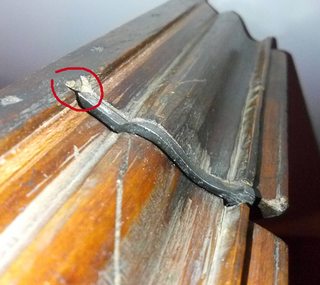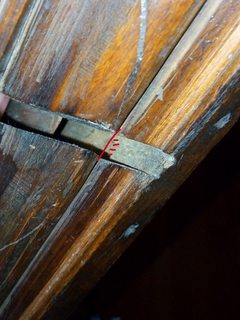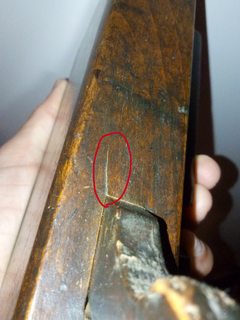GCS-Creations
Member
Hello!
New here and fairly new to woodworking really. I never enjoyed it at school, but I recently realised that the reason for that probably lay by the teachers I had, not the wood!.. I started turning acrylic fountain pens a while ago and really started to enjoy making things myself.
Though not a UK resident I thought I'd sign up here as I found quite a few topics about moulding planes with knowledgeable answers here and besides, my first language is english.
So - I received two planes I bought on a certain site a few days ago. I knew that one would be in need of more attention than the other with an iron that is a bit pitted and will need a bit of patience getting right again, but that one actually turned out to perform fairly decently. With that I mean to say that it cut and I managed to get a profile.
The other one however cut well at the start, then had a 'catch' which loosened the blade. Since then the blade will not stay put anymore and will wiggle itself free with every pass, and I simply can't figure out why!
Thought a video explains it better
I did notice two things inspecting the plane:
1. There seems to be a bit on the shoulder(?) that looks like it has been shaved off (by use?) over the years:

It looks like is starts getting wider at the red line I drew.

2. There's a crack up here, which I'm not happy about at all and might very well be the culprit?.. Considering that it looks like there is some dust in there I suppose it's been there for a while. Any suggestions on fixing this?

the images all should enlarge when clicked.
Mind, I'm absolutely new to planes really and I don't think I've used one before as far as I remember!
Next up: What kind of wood should I be looking at to use with these kind of planes?
Many thanks,
Geoffrey
New here and fairly new to woodworking really. I never enjoyed it at school, but I recently realised that the reason for that probably lay by the teachers I had, not the wood!.. I started turning acrylic fountain pens a while ago and really started to enjoy making things myself.
Though not a UK resident I thought I'd sign up here as I found quite a few topics about moulding planes with knowledgeable answers here and besides, my first language is english.
So - I received two planes I bought on a certain site a few days ago. I knew that one would be in need of more attention than the other with an iron that is a bit pitted and will need a bit of patience getting right again, but that one actually turned out to perform fairly decently. With that I mean to say that it cut and I managed to get a profile.
The other one however cut well at the start, then had a 'catch' which loosened the blade. Since then the blade will not stay put anymore and will wiggle itself free with every pass, and I simply can't figure out why!
Thought a video explains it better
I did notice two things inspecting the plane:
1. There seems to be a bit on the shoulder(?) that looks like it has been shaved off (by use?) over the years:

It looks like is starts getting wider at the red line I drew.

2. There's a crack up here, which I'm not happy about at all and might very well be the culprit?.. Considering that it looks like there is some dust in there I suppose it's been there for a while. Any suggestions on fixing this?

the images all should enlarge when clicked.
Mind, I'm absolutely new to planes really and I don't think I've used one before as far as I remember!
Next up: What kind of wood should I be looking at to use with these kind of planes?
Many thanks,
Geoffrey




































